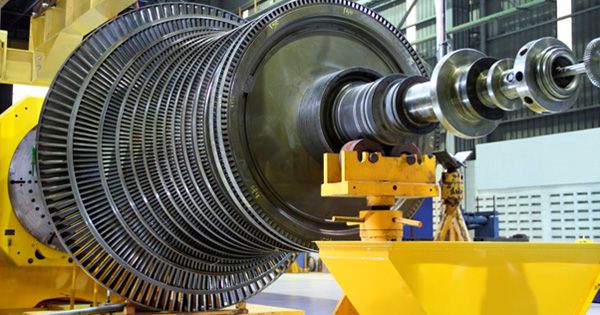Gas turbines, in general, are effective sources of high-power generation with faster startup vigour, cleaner emissions, and higher efficiency.
In the early years, coal was the main choice of fuel for baseload power. However, recently, gas turbine designs and contributions are gaining more prominence in the market. Statistically, the expected market value of the gas turbine industry is expected to reach $20 billion in 2021.
These types of machinery are efficient sources of large-scale power distribution for huge city-wide units and smaller power supplies equally. Moreover, gas turbines (GT) can produce large quantities of energy with small-scale carbon footprints.
Therefore, many brands are investing in GT power plants for improved power generation. Statistically, the gas turbine industry is projected to have a CAGR of 8% by 2026.
There are multiple reasons for depending on gas turbine services for generating power and investing in these designs. They are detailed hereafter.
The performance of gas turbines, as per design
Typically, the thermodynamic process that powers gas turbines is known as the Brayton cycle. Here, power plant operators understand the performance level after focusing on the firing temperature and pressure ratio.
To optimize the level of power generation, it is important to increase the pressure-centric ratio of compressor discharge with inlet air pressure. To note, the design of the gas turbines determines the compression ratio of the system.
Typically, the designs of the gas turbines are either aero-derivative or heavy frame (industrial) as per the customer demands and requirements. The former has lighter-weight engines best for aircraft jets that run employing high compression ratios. On the other hand, the latter is better suited for stationary systems that work well with low-pressure ratios.
Comparatively, the aero-derivative gas turbine designs have a higher sensitivity to the inlet temperature of compressors.
Changes in power generation demands for baseload power
Many industries are shifting their baseload power generation strategies from the traditional design models to renewable-friendly designs. To note, industries globally are opting for renewable energy sources more in the power generation grid, like wind and solar power.
Another factor that is reducing coal-fired power consumption options and increased renewable power dependency is the feed-in tariffs. Altogether, the factors increase the demand-centric pressure for baseload power generation.
Reportedly, power plants running with gas turbines are replacing baseload power plants running on coal-based power generation. Currently, the power plants in the market require a lower load and can manage competently at approximately 50 percent load.
Also, power plants with adjustable output and baseload levels running at 4,000 hours per year gain more acceptance. In this context, gas turbines run with less carbon dioxide emission compared to coal-based power plants.
Plus, they have quicker response levels to the new power sources that get introduced to the grid. Therefore, the easier adaptability of gas turbines and low load capacity is appealing for power generation-oriented investment for OEMs.
Investing in gas turbine designs in the overall market
The gas turbine industry is a strong power supply contributor for most market leaders. To gain a greater competitive edge and boost performance rate, many manufacturers are investing their resources and time in gas turbine design.
For designing an efficient gas flow route through the compressors, passing the burner to the turbine engine, GT engineers require efficient tools. CAE (computer-aided engineering) software tools are useful for predicting the gas turbine performance to modify the design accordingly.
The power plant operators refine the dimensions and blade shape of the software and handle quick analysis with these tools. Thereafter, it is comparatively easier for the professionals to plan their design solutions and subsequent costs.
CAE tools for gas turbine design improvements
Industry leaders find investing in CAE software tools as a lucrative arrangement for power generation growth rate. An investable system here is the comprehensive gas turbine design.
To elaborate, one CAE package handles multiple design-related adjustments like preliminary sizing, vibration test, mechanical stress, fluid dynamics, and final design analysis. Power plant operators notice better data transfer and advanced technology usage while taking this approach.
Notably, well-planned investment ensures better cost efficiency, time management, and prevents too much wastage of resources during the gas turbine designing process. Multiple convenient CAE software options deliver practical design plans and suggestions for modifications in the design.
In terms of investment-based profit, the stakeholders can expect high benefits from these efficiency-boosting plans. Not only would consumers spend low amounts to gain power, but OEMs can also deliver better quality products in the competitive market. Also, the low emission rates improve the condition of the environment globally.
The application of CAE tools in gas turbine manufacturing and design has proven beneficial for the gas turbine industry overall. Indeed, smarter investments are necessary for gas turbine-centric OEMs to deliver better-quality gas turbine designs. This, in turn, boosts the reduction of fossil fuel power sources for power plants and better profits for gas turbine OEMs.
Conclusion
Overall, gas turbines have noticed a growth in popularity as a baseload power generation source. To increase efficiency rate and generate more power, industry leaders should invest in advanced tools and techniques to design gas turbines. To benefit here, understanding and selecting a compatible tool choice is vital.

Reblog It collaborates closely with clients to develop tailored guest posting strategies that align with their unique goals and target audiences. Their commitment to delivering high-quality, niche-specific content ensures that each guest post not only meets but exceeds the expectations of both clients and the hosting platforms. Connect with us on social media for the latest updates on guest posting trends, outreach strategies, and digital marketing tips. For any types of guest posting services, contact us on reblogit.webmail[at]gmail.com.
